Pretty Trees for Patios, Paths and Other Tight Spots
People have grown trees in their gardens since ancient times. But as gardens become smaller and more valuable as outdoor living spaces, is there still room for a tree? I know from living with the smallest of garden spaces that whether or not to plant a tree isn’t an easy decision, but it can bring real garden benefits. Trees add volume and height to the garden, as well as year-round interest with foliage, flowers, bark and fruit.
But how do you sort through the many offerings in catalogs and nurseries to find a tree that will suit your garden’s size, soil, climate conditions and design requirements, as well as satisfy your taste? Here you’ll learn how to select a tree for a smaller garden, as well as pruning techniques that can widen your choices.
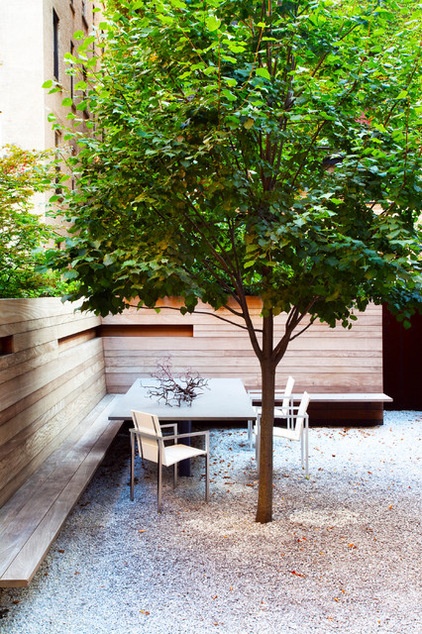
Selecting the Right Tree
When choosing a tree for a smaller garden, standard reference lists are not always helpful, as most of these lists were drawn up when a small garden was much larger than it is today. Plenty of trees are suitable for smaller spaces, however; there are just three things to consider: size, shape and rate of growth.
Mature size: It is important to know what the mature size of the tree is likely to be. In a nursery or garden center, the trees are generally only a few years old and bear little similarity to their eventual size. Beware: Many information labels on trees at garden centers or nurseries say only how tall the tree will be in 10 or 20 years, and in most cases that is not the mature height. There can be a big difference between the size of a tree at 20 years and 50 years.
Shape: Shape is just as important as size, perhaps even more so in relation to the garden’s design. Upright trees can be an obvious choice for a small garden, as they occupy less space while providing the benefit of a vertical element, including the creation of a focal point and maybe screening from neighbors.
But upright trees do not provide the best shade. For that we need a more spreading shape, usually with larger leaves, to create a canopy under which there is room to sit or dine. (Avoid a tree whose branches drop too low to the ground.)
Rate of growth: Some species are slow growing and will not provide the instant effect you may be looking for. On the other hand, you don’t want to be fighting a battle against a tree that is quickly outgrowing its space and is not suited to selective pruning or trimming.
Shown: Small-leaved lime, or linden (Tilia cordata)
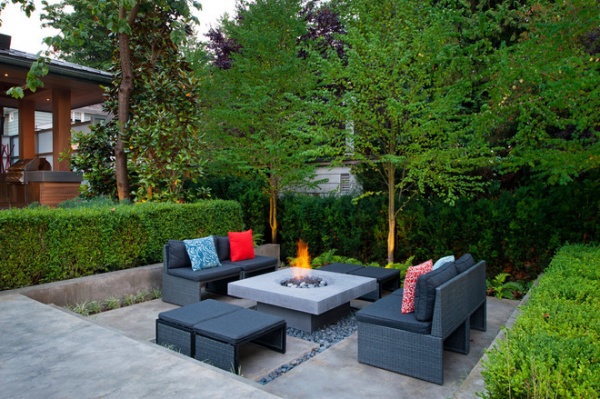
Environmental benefits. Planting trees in small city gardens can be invaluable to wildlife, providing nesting and roosting sites for birds, nectar and pollen for insects, and a home for aphids and caterpillars, which are important sources of food for many birds.
Trees that offer environmental benefits and are best for space-challenged gardens include the hawthorns (Crataegus spp) and rowans (Sorbus spp). Both produce berries in autumn, which provide food for wildlife and great decorative color. Trees such as Sorbus ‘Joseph Rock’, Sorbus sargentiana and Crataegus laevigata ‘Pauls Scarlet’ are favorites for smaller gardens, as they fulfill the size, shape and rate-of-growth needs while benefiting the environment.
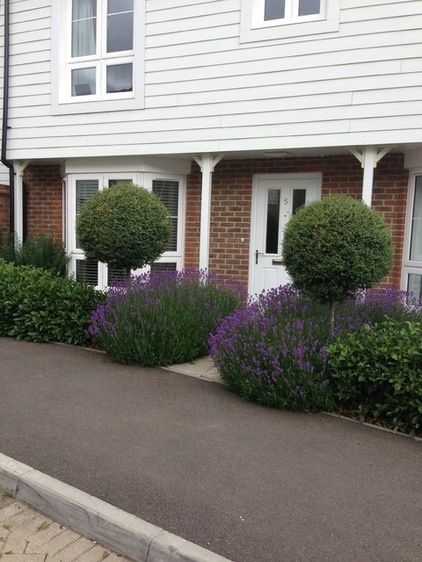
Controlling Size and Shape
Though choosing the right tree is vital, selective pruning and training can also help trees in smaller gardens. Using these methods, some trees that would normally be considered too large for the small garden, such as common hornbeam (Carpinus betulus) and the maidenhair tree (Ginkgo biloba), can be considered.
The Greeks and Romans were some of the first to practice this in ancient times, when clipped evergreen trees were a principle ornament of their gardens. Interestingly, the head gardener in Roman gardens was known as the topiarius, so it’s easy to see where we get the term “topiary” from.
Topiary in small gardens tends to be decorative, using mainly small-leaved evergreens grown in containers, such as the privet honeysuckle (Lonicera pileata), which is shown here clipped into standard balls.
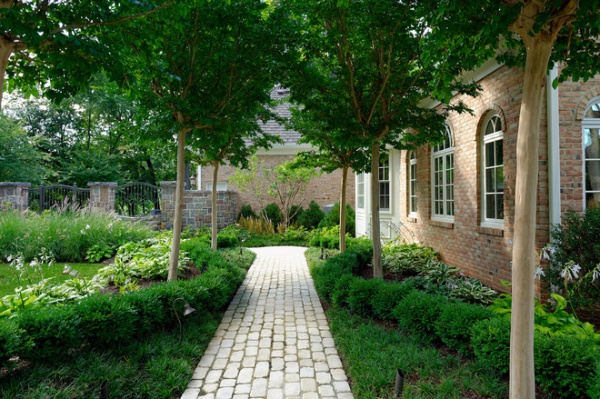
Raising the crown. Raising the crown, or canopy, of a tree by removing or shortening the lower branches can create valuable room under a tree while retaining a tree’s benefits. Crown raising does minimal damage to a tree, as long as the removed limbs are not too large and only a few branches are removed at a time and from each spot.
Shown: Crape myrtle (Lagerstroemia sp)
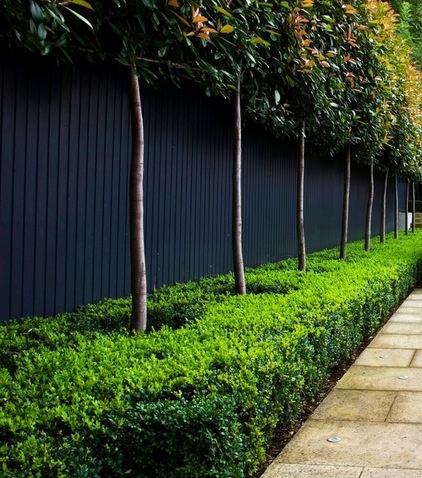
Professional garden designers have started incorporating crown raising into their designs, especially when multiple trees are planted as a feature, as with these Photinia x fraseri ‘Red Robin’ examples.
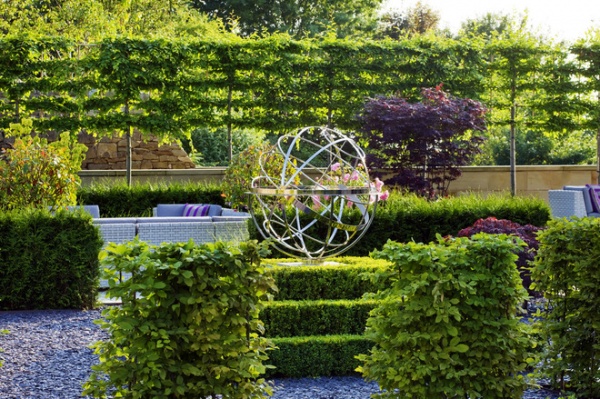
Pleaching. Pleaching is a method of growing trees, usually in a straight line, with the branches of the trees tied together and clipped to form a flat plane above the bare trunk. The branches are tied to canes or wire and are regularly pruned to keep their shape. Some species used have the tendency to naturally graft themselves onto one another.
This method is similar to the traditional espalier system of growing fruit trees against walls, except that neighboring espaliered trees do not connect and grow into each other. And pleached tree foliage tends to be higher up on the trunks, or stilts, as garden designers call them.
It takes a lot of work to train and maintain pleached trees, although today they are more widely available as already trained specimens. This method is making a comeback as gardeners and garden designers utilize the ability of pleached trees to create privacy and block wind and sound while creating a wildlife environment in a limited space.
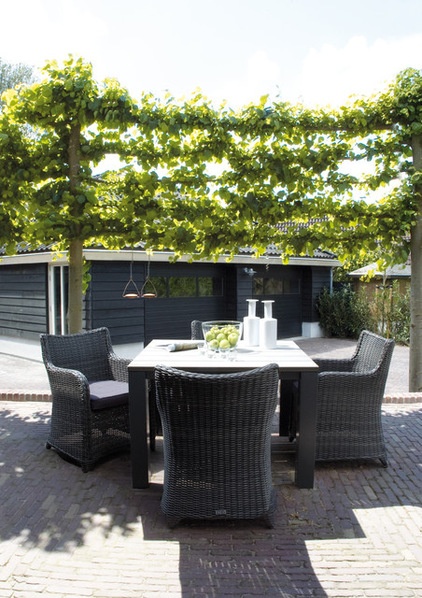
Screening neighboring properties with a single line of pleached trees is perhaps the most common use of this form of trained tree. Planting a square of interlocked pleached trees in the center of the garden is a creative way to adapt this technique.
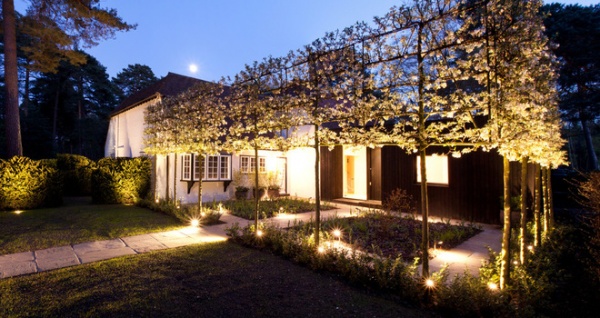
Not all trees are suitable for pleaching, but linden (Tilia x europaea), beech (Fagus sylvatica), hornbeam (Carpinus betulus) and fruit trees, such as apples and pears, are commonly pleached species. Pleached trees tend to be deciduous, though the evergreen oak (Quercus ilex) has been successfully pleached.
The pleached apple trees shown here illustrate the benefits of raising trees on stilts in smaller spaces. They not only provide the beauty of the spring blossom and fruit that follows, but also allow space for cropping underneath.
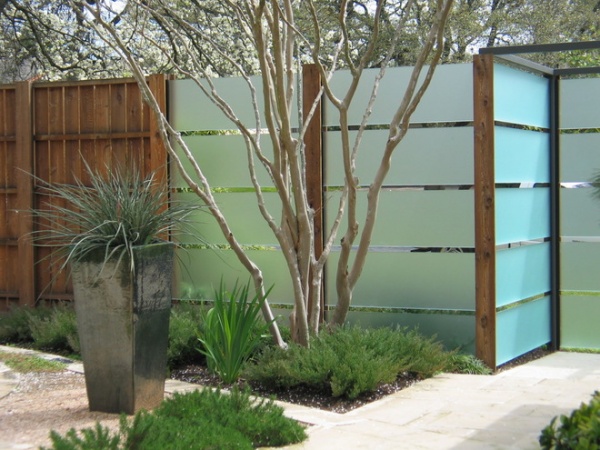
Multistems. Multistem trees combine elements of both trees and shrubs; their benefits make them a great choice for smaller gardens. They can fill a small space while creating a feeling of openness that is not always achieved with a single-stem tree. They provide the benefits of a larger foliage mass and often the decorative impact of beautiful bark.
Not all standards can be grown as multistem trees, but silver birch (Betula sp) is a favorite. As a standard tree, it would be far too large for a small garden, but it’s perfect as a multistem. Other good examples include the paper-bark maple (Acer griseum), snowy mespilus (Amelanchier lamarkii) and the Japanese angelica tree (Aralia elata ‘Variegata’).
Shown: Crape myrtle (Lagerstroemia sp)
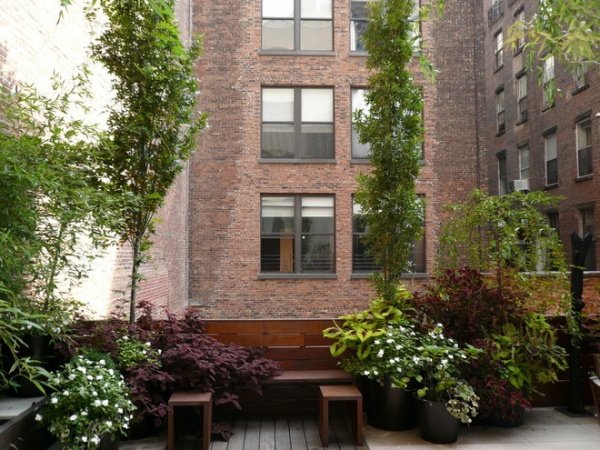
Trees in Containers
If you don’t want to commit to planting a tree, a container can be a good solution. Some trees are perfectly happy in containers, and most trees will live quite happily in them for at least a limited period of time. Containers let you grow trees that are not suited to your soil conditions or are not fully hardy and require winter protection. They also give you the opportunity to rearrange your garden in the same way you move furniture around your home.
But trees planted in containers do require more attention than those planted in the ground. They need to be watered regularly, as the soil can dry out quickly, and need regular feedings, as nutrients tend to leach out. Every few years it is important to repot the tree, replace old compost and, if necessary, move up a pot size to prevent the tree’s becoming stressed and root-bound.
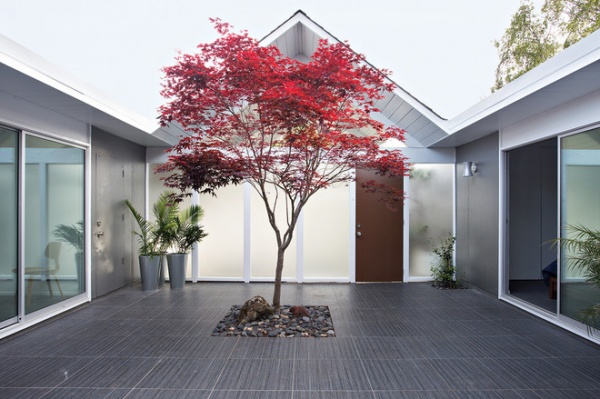
Perhaps garden design in the future will treat trees in small spaces almost as sculptures or living works of art. Whatever happens in the future, there is no doubt that our smaller gardens would not be the same without the benefit of trees.
Shown: Japanese maple (Acer palmatum)
More: 5 Best-Behaved Trees to Grace a Patio
Narrow Trees for Tight Garden Spaces
More tree suggestions in the Houzz Garden Section












